Plantar warts occur on the sole of the foot. Plantar Warts: Causes, Symptoms, and Effective Treatments for Foot Warts
What are plantar warts. How do plantar warts develop. What causes plantar warts. Who is at risk for plantar warts. How are plantar warts diagnosed. What complications can plantar warts cause. How can plantar warts be prevented and treated.
Understanding Plantar Warts: A Comprehensive Guide
Plantar warts are a common foot condition that affects many individuals, particularly children and those with weakened immune systems. These noncancerous skin growths appear on the soles of the feet, often causing discomfort and pain when walking or standing. To better understand this condition, let’s explore its causes, symptoms, and available treatments.
The Nature and Types of Plantar Warts
Plantar warts are rough bumps that develop on the feet, typically on areas that bear the most weight, such as the heels. They are caused by an infection with the human papillomavirus (HPV) and can be categorized into two main types:
- Myrmecial-type plantar warts: These are caused by HPV-1 and appear as domed, smooth-surfaced lesions. They often contain black or brownish dots, which are actually tiny burst blood vessels.
- Mosaic-type plantar warts: Caused by HPV-2, these warts form clusters that are tightly packed together. They tend to be flatter and less painful than myrmecial warts.
Unlike other types of warts, plantar warts grow inward due to the pressure exerted on the soles of the feet when standing or walking. This inward growth can lead to increased pain and discomfort.
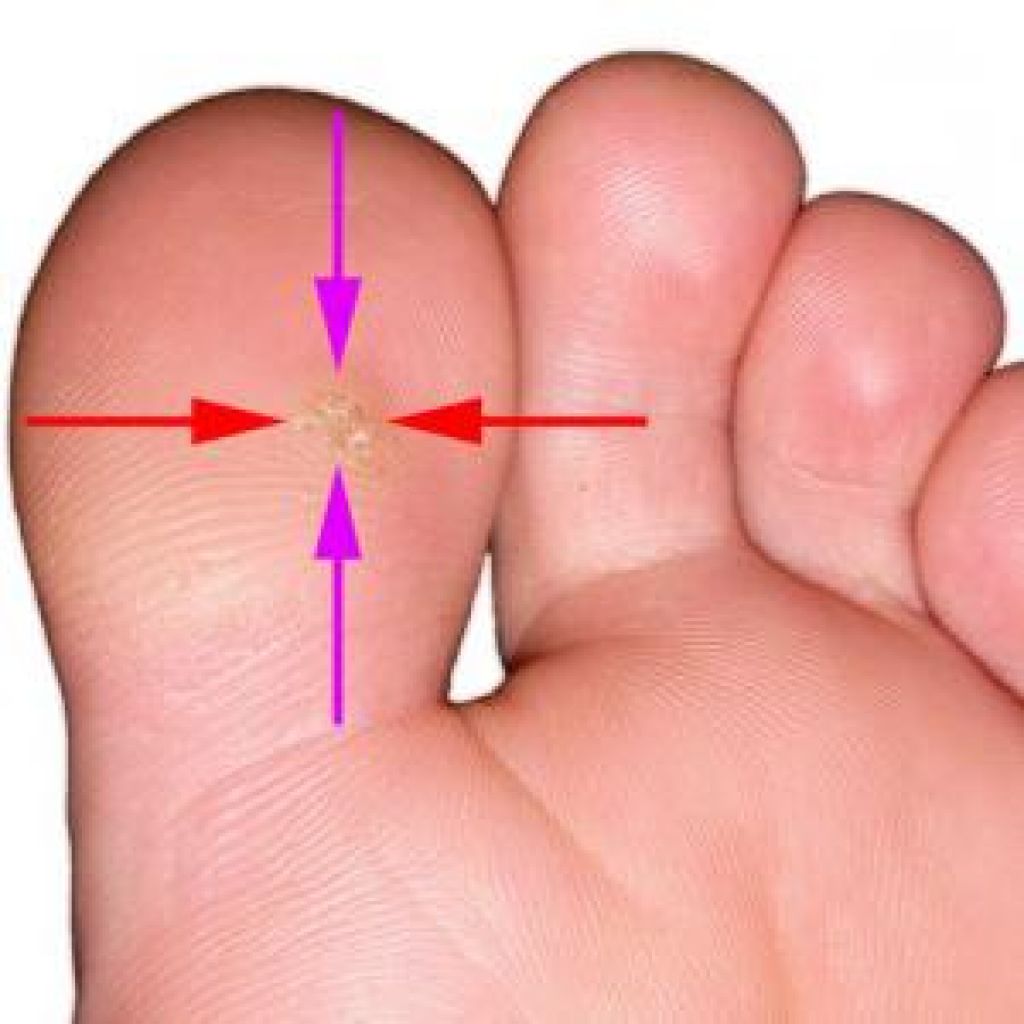
Are plantar warts common?
Yes, plantar warts are quite common, especially among children. Studies have shown that up to 33% of children may develop warts at some point. While less prevalent in adults, plantar warts can affect individuals of all ages.
Identifying Plantar Warts: Signs and Symptoms
Recognizing plantar warts is crucial for early intervention and treatment. The following symptoms are typically associated with plantar warts:
- A rough, solitary growth or a cluster of small growths on the sole of the foot
- Hard, thickened skin at the site of the wart
- Black or brownish dots within the wart, which are burst capillaries
- Pain or discomfort when walking or standing
Can plantar warts be mistaken for other foot conditions?
Yes, plantar warts can sometimes be mistaken for corns or calluses. However, the presence of tiny black dots (burst blood vessels) and pain when squeezing the sides of the wart can help distinguish plantar warts from other foot conditions.
The Root Cause: Understanding HPV and Plantar Warts
Plantar warts are caused by an infection with certain strains of the human papillomavirus (HPV). The virus enters the skin through small cuts, breaks, or weak spots on the soles of the feet. Once inside, it causes rapid cell growth, resulting in the formation of a wart.
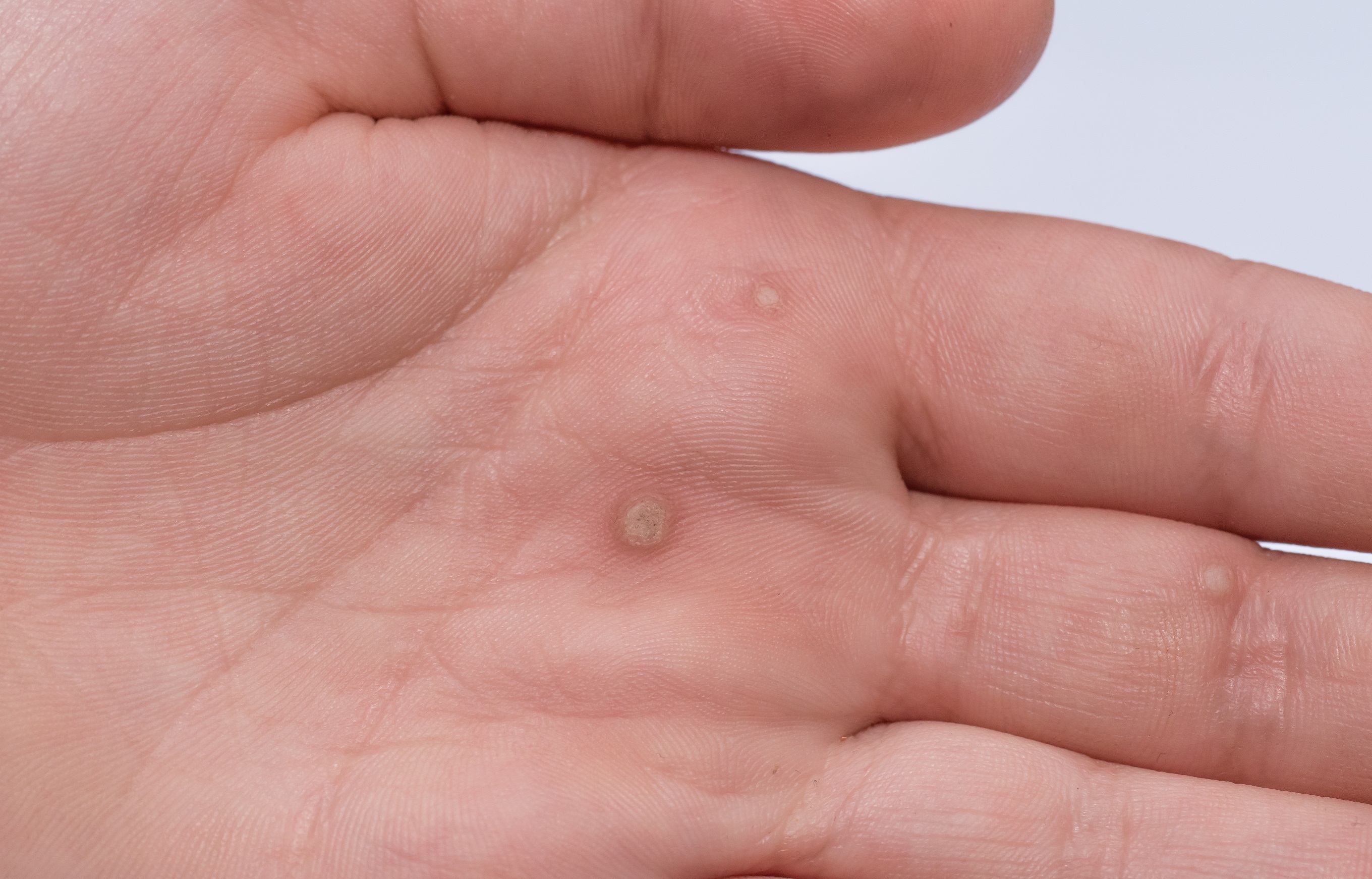
How is HPV transmitted in relation to plantar warts?
HPV is highly contagious and can be transmitted through direct contact with contaminated surfaces. Common transmission sites include:
- Warm, moist environments like public swimming pools
- Locker room floors
- Shared bathroom facilities
The virus thrives in these conditions, making it easier for people to contract the infection when walking barefoot in such areas.
Risk Factors: Who’s Most Susceptible to Plantar Warts?
While anyone can develop plantar warts, certain factors increase the risk of infection. These include:
- Age: School-age children are more prone to developing plantar warts
- Weakened immune system: Individuals with compromised immunity are at higher risk
- Skin conditions: People with dermatitis or other skin disorders that weaken the skin barrier are more susceptible
- Barefoot exposure: Frequently walking barefoot in warm, damp environments increases the risk of infection
- Close contact: Living with someone who has warts can increase the likelihood of transmission
- Occupation: Those who work with raw meat may have a higher risk of developing plantar warts
Does having plantar warts once increase the risk of future infections?
While having plantar warts doesn’t necessarily increase the risk of future infections, it may indicate a susceptibility to the virus. Practicing good foot hygiene and taking preventive measures can help reduce the risk of recurrence.
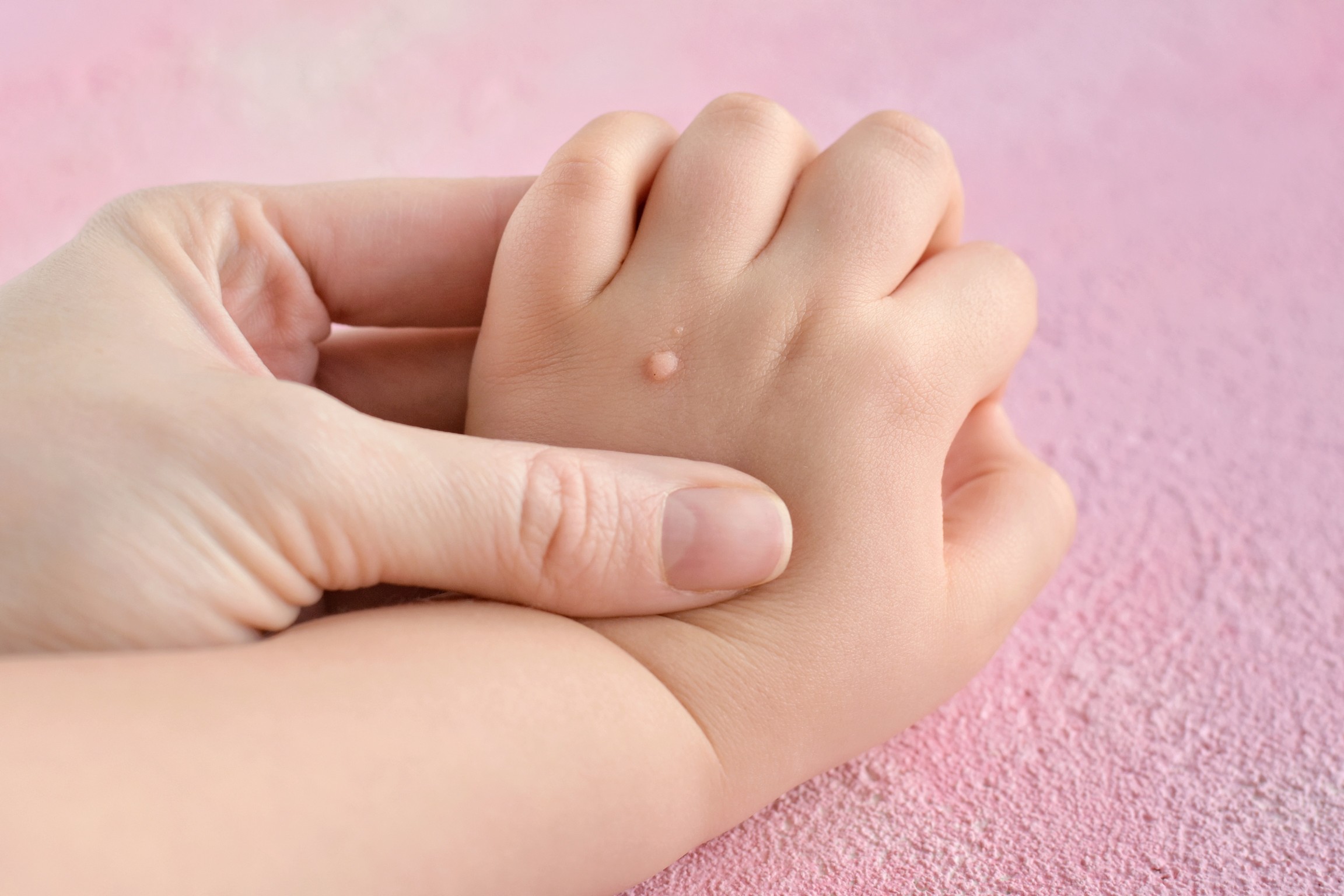
Diagnosis and Detection: Identifying Plantar Warts
Diagnosing plantar warts typically involves a physical examination by a healthcare professional. The doctor will look for the characteristic features of plantar warts, such as the rough, thickened skin and possible presence of black dots. In some cases, additional steps may be taken to confirm the diagnosis:
- Paring: The doctor may use a scalpel to carefully remove the top layer of the wart to check for the presence of tiny blood vessels, which appear as black dots.
- Biopsy: In rare cases, a small sample of the wart may be sent to a laboratory for analysis to rule out other conditions.
- PCR testing: A newer diagnostic method involves taking a swab of the suspected wart and analyzing it using the multiplex polymerase chain reaction (PCR) technique. This method has shown promising results in accurately identifying plantar warts.
Is professional diagnosis always necessary for plantar warts?
While many people can identify plantar warts on their own, it’s advisable to seek professional diagnosis, especially if the growth is causing pain or spreading. A healthcare provider can confirm the diagnosis and recommend appropriate treatment options.
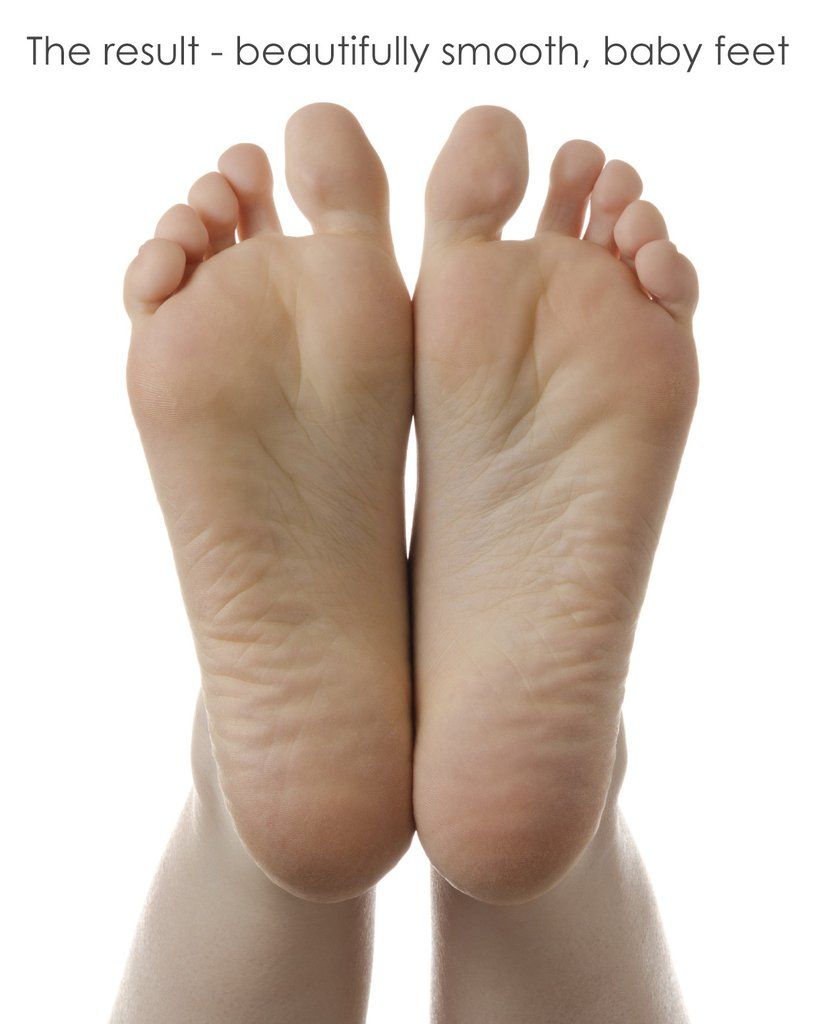
Complications and Impact: Beyond the Wart
Although plantar warts are generally harmless and often resolve on their own, they can lead to various complications and impact an individual’s quality of life:
- Altered gait: The pain from plantar warts may cause changes in walking patterns, potentially affecting posture and leading to discomfort in other areas like the knees or hips.
- Reduced physical activity: Discomfort from plantar warts can interfere with sports and other physical activities, potentially leading to a more sedentary lifestyle.
- Spread of infection: Scratching or picking at warts can cause the virus to spread to other parts of the body or to other people.
- Psychological impact: Visible warts may cause embarrassment, particularly in children, potentially leading to social discomfort or teasing.
Can plantar warts become cancerous?
No, plantar warts are benign growths and do not become cancerous. However, if a growth on the foot changes in appearance, size, or color, it’s important to have it evaluated by a healthcare professional to rule out other conditions.

Prevention and Management: Keeping Plantar Warts at Bay
While plantar warts can be stubborn, there are several strategies to prevent their occurrence and manage existing warts:
Prevention Tips:
- Keep feet clean and dry
- Wear sandals or flip-flops in public showers, locker rooms, and pool areas
- Avoid walking barefoot in public areas
- Don’t share personal items like towels, socks, or shoes
- Change socks daily and keep feet dry
- Cover any cuts or abrasions on the feet to prevent virus entry
Management Strategies:
- Avoid touching or scratching warts
- Wash hands thoroughly after touching warts
- Cover warts with waterproof bandages when swimming
- Use separate nail files or pumice stones for affected areas
- Seek medical treatment for persistent or painful warts
Are over-the-counter treatments effective for plantar warts?
Over-the-counter treatments containing salicylic acid can be effective for some plantar warts. However, for persistent or painful warts, professional medical treatment may be necessary. Options may include cryotherapy (freezing), laser treatment, or prescription medications.
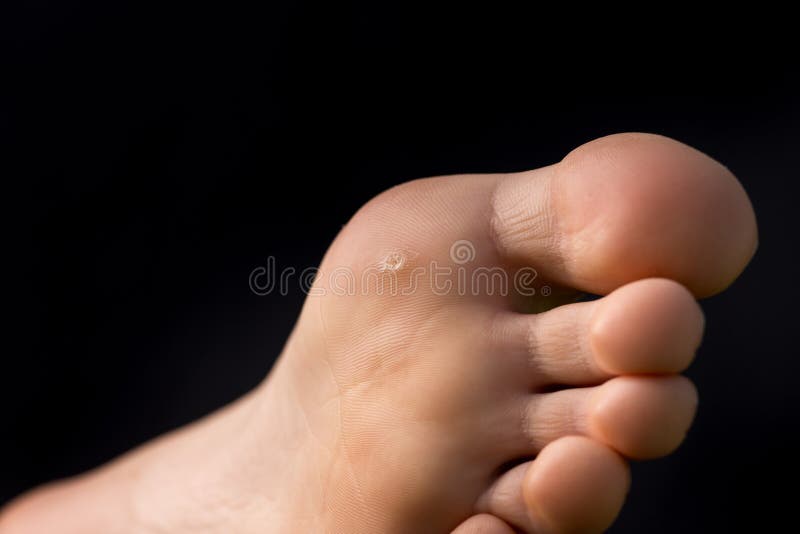
Understanding plantar warts, their causes, and prevention methods is crucial for maintaining foot health. By recognizing the symptoms early and taking appropriate measures, individuals can minimize the impact of these common yet troublesome growths. Remember, while plantar warts often resolve on their own, persistent or painful warts warrant professional medical attention to ensure proper treatment and prevent complications.
Warts on the feet (plantar warts): Causes, prevention, and treatment
Plantar warts are warts that grow on the feet. They are noncancerous skin growths that result from infection with the human papillomavirus (HPV). They feature hard, thickened skin, often with black or brown dots in the middle, and they can be painful to stand on.
Plantar warts are rough bumps that grow on the feet. They usually appear on the heels — the areas of the feet that experience the most pressure.
Plantar warts result from human papillomavirus (HPV). The virus can penetrate cuts or tears on the soles of the feet. Up to 33% of children have warts, but they are less common in adults.
Like any other type of warts, plantar warts are harmless and go away with little to no treatment. However, treatments are available.
This article explains warts on the feet, their causes and treatment, and more.
Plantar warts usually grow on the soles of the feet, particularly at pressure points. Plantar warts are sometimes called verrucas, and they can grow quite large.
Plantar warts are sometimes called verrucas, and they can grow quite large.
Unlike other kinds of warts, plantar warts do not grow outward. Because the soles of the feet support the body when a person is standing, pressure pushes the warts inward, which can cause pain.
Two types of plantar warts can appear on the feet:
- Myrmecial-type plantar warts: These warts develop as a result of HPV-1 infection. They appear as domed, smooth-surfaced lesions. The myrmecial type may contain black or brownish dots, which are tiny burst blood vessels. They tend to cause pain while a person is walking or standing.
- Mosaic-type plantar warts: Mosaic-type warts are clusters of plantar warts that pack tightly together. HPV-2 infection is responsible for this type of warts. They tend to be flatter and less painful than myrmecial warts.
Learn more about HPV infection here.
General symptoms of plantar warts include:
- a solitary rough growth or a cluster of small growths on the sole of the foot
- hard, thickened skin at the place where the wart grows inward
- black or brownish dots, which are burst capillaries
- pain when walking or standing
Learn how to identify types of warts here.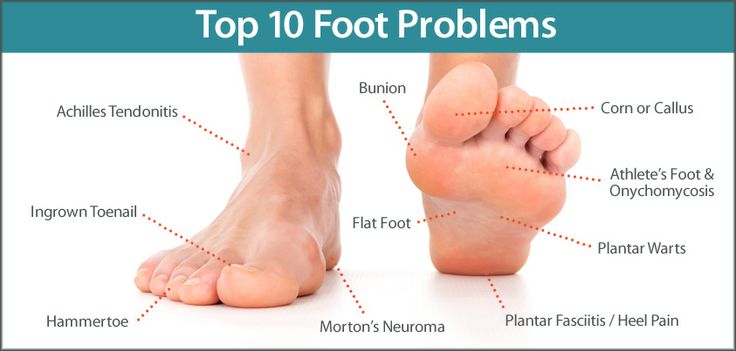
Plantar warts result from HPV infections. Warts occur when the virus enters skin cells through cuts or injuries on the bottom of the foot. The virus makes the skin cells grow more quickly, which causes a thickened bump, or wart, to form.
HPV is very common and contagious, with hundreds of variations. However, only a few types of HPV cause plantar warts. The viruses perform best in warm, moist places such as communal areas near swimming pools, and they are most likely to infect moist or injured skin.
If a person scratches or picks a wart, they may transfer the virus elsewhere, such as under the fingernail. This might cause more warts to grow, separately from the original infection site.
Although anyone can develop plantar warts, this type of wart is more common in:
- school-age children
- people with compromised immune systems
- people with dermatitis, who have a weakened skin barrier
- people who walk barefoot in damp, warm places where HPV thrives
- people who live with other people who have warts
- people who work with raw meat
Although warts on the feet are noncancerous and often go away on their own, they may cause complications.
The discomfort from plantar warts may cause someone to change the way they stand or walk. This could ultimately affect a person’s posture and cause pain elsewhere, such as in the knee or hip. Pain may also interfere with sporting activities and prevent a person from being active.
Any warts on the skin may also cause embarrassment or lead to teasing at school. Children may experience negativity from others as a result of having a contagious condition, however benign.
Warts are contagious regardless of location. However, there are a few things people with warts can do to avoid transmitting the virus to unaffected areas or to other people:
- Avoid touching or scratching warts, and wash the hands properly after touching them.
- Keep the feet clean, dry, and protected from cuts.
- Cover warts with a bandage when swimming.
- Avoid sharing towels, washcloths, shoes, or socks with other people.
- Wear sandals or flip-flops when walking in a pool area or locker room.

- Do not share pumice stones or skin files with others.
- Wear clean socks every day.
A doctor will check the feet for distinctive features to diagnose a plantar wart. They may scrape or cut off the top layer with a scalpel to check for black dots.
To confirm their diagnosis, the doctor may send the skin sample to a laboratory for analysis.
However, a 2022 article in the Journal of Medical Virology describes a newer diagnosis method involving taking a swab of the suspected wart. Doctors test the swab using the multiplex polymerase chain reaction (PCR) method. The researchers found identical results using the PCR method and older methods.
Warts often go away without treatment, although this can take several weeks to years. The immune system can clear the virus over time, so the warts disappear. People with compromised immune systems may find it more difficult to get rid of warts.
Doctors have many treatment options for warts, including:
- cryotherapy, or freezing medication
- cantharidin, which causes a blister under the wart that cuts off its blood supply
- electrosurgery and curettage, which involves scraping and burning the wart
- excision, which involves cutting off the wart
For stubborn warts, a dermatologist may recommend laser treatment or immunotherapy.
People can also try various home remedies to treat warts, such as salicylic acid products or the duct tape method. The video below is from the American Academy of Dermatologists and explains how to use home remedies.
Learn more about wart removal methods here.
What happens if you leave a wart untreated?
Warts usually go away on their own. However, this may take months or years to happen. While they are still present, they can spread to unaffected areas of the body or to other people.
Can warts be cancerous?
Common warts are noncancerous. If someone has a wart-like growth on their skin and is unsure what it is, they can consult a doctor to confirm the diagnosis.
Warts usually disappear on their own, but if a person wants treatment, they can ask a pharmacist for recommendations. A person should contact a doctor if:
- they have a wart that keeps coming back
- their wart is very large or painful
- their wart bleeds or changes in appearance
- they are worried about a wart-like growth
In people with robust immune systems, warts usually disappear within several months or years.:max_bytes(150000):strip_icc()/FootProblemswithRheumatoidArthritis_Final_2-459a5559f5634de9abd6926f8e1d69a6.png) In children, about 50% of warts disappear within 6 months without needing treatment, and 90% disappear within 2 years. There is little data on the natural course of warts in adults.
In children, about 50% of warts disappear within 6 months without needing treatment, and 90% disappear within 2 years. There is little data on the natural course of warts in adults.
Treatment for plantar warts focuses on removing skin that contains the virus. If some virus remains, the wart is likely to recur.
Warts on the feet develop when a person’s foot comes into contact with skin cells that carry HPV. This is more likely to happen when the foot is moist or the skin is broken. HPV thrives in warm, damp areas such as communal changing rooms.
Plantar warts are not harmful, but they can be painful. Although treatment is unnecessary, people may choose to buy over-the-counter remedies or talk with a doctor about other wart-removal options.
Most warts disappear on their own, but in people with compromised immune systems, they might take longer to disappear.
People can take precautions, such as washing their hands after touching their feet, to prevent HPV from spreading to other body parts or to other people.
Skin Conditions & Warts – Kansas City Foot Specialists
Athlete’s Foot
Athlete’s foot is caused by a fungal infection of the skin. Athlete’s foot is by far the most common fungal infection of the skin. The infection can be either acute or chronic. The recurrent form of the disease is often associated with fungal-infected toenails. The acute form of the infection most often presents with moist, scaling between the toes with occasional small blisters and/or fissures. As the blistering breaks, the infection spreads and can involve large areas of the skin on the foot. Burning and itching accompany the blisters and may cause great discomfort. As the skin breaks down from the fungal infection, a secondary bacterial infection can ensue.
The chronic form of athletes foot is a relatively noninflammatory type of infection. It is characterized by a dull redness to the skin and pronounced scaling. It generally does not itch or result in the formation of blisters. This form of the disease frequently has an associated fungal infection of the toenails. There are good topical and oral medications available for the treatment of this condition. A definitive diagnosis is made by taking a scraping of the skin and culturing it. Treatment should be directed at controlling the fungal infection and treating any secondary bacterial infection with oral antibiotics. Soaking the feet in Epsom salts and warm water is helpful as is wearing sandals to reduce moisture accumulation and heat generated by closed shoes.
There are good topical and oral medications available for the treatment of this condition. A definitive diagnosis is made by taking a scraping of the skin and culturing it. Treatment should be directed at controlling the fungal infection and treating any secondary bacterial infection with oral antibiotics. Soaking the feet in Epsom salts and warm water is helpful as is wearing sandals to reduce moisture accumulation and heat generated by closed shoes.
Corns & Calluses
Corns and calluses are areas of thick skin that result from excessive pressure or friction over a bone in the foot. When these areas develop on the bottom of the foot they are called calluses. When they occur on the top of the toes they are called corns. They can also occur between the toes, the back of the heels and the top of the foot. The thickening of the skin is a normal body response to pressure or friction. The most common area for the formation of calluses on the bottom of the foot is in the area of the ball of the foot. These areas can become quite painful as the skin thickens. People who have diabetes are at risk of these areas breaking down producing sores or ulcerations that can become infected. People with diabetes should not try home remedies and should see a doctor for the treatment.
These areas can become quite painful as the skin thickens. People who have diabetes are at risk of these areas breaking down producing sores or ulcerations that can become infected. People with diabetes should not try home remedies and should see a doctor for the treatment.
Corns are areas of thick skin that most commonly occur on the top of the toes. Generally there is an associated hammertoe deformity, which causes the toes to rub on the top of the shoes. Professional treatment is directed at correcting the hammertoe deformity. Small corns can also occur on the side of the little toe next to the toenail. A small bone spur causes this problem. Professional treatment consists of removing the bone spur. Bone spurs also cause corns between the toes.
There are numerous over the counter treatments for corns and calluses. These remedies are only temporary because the source of the pressure has not been alleviated. Professional treatment consists of using a special shoe insert called a functional orthotic that corrects foot function.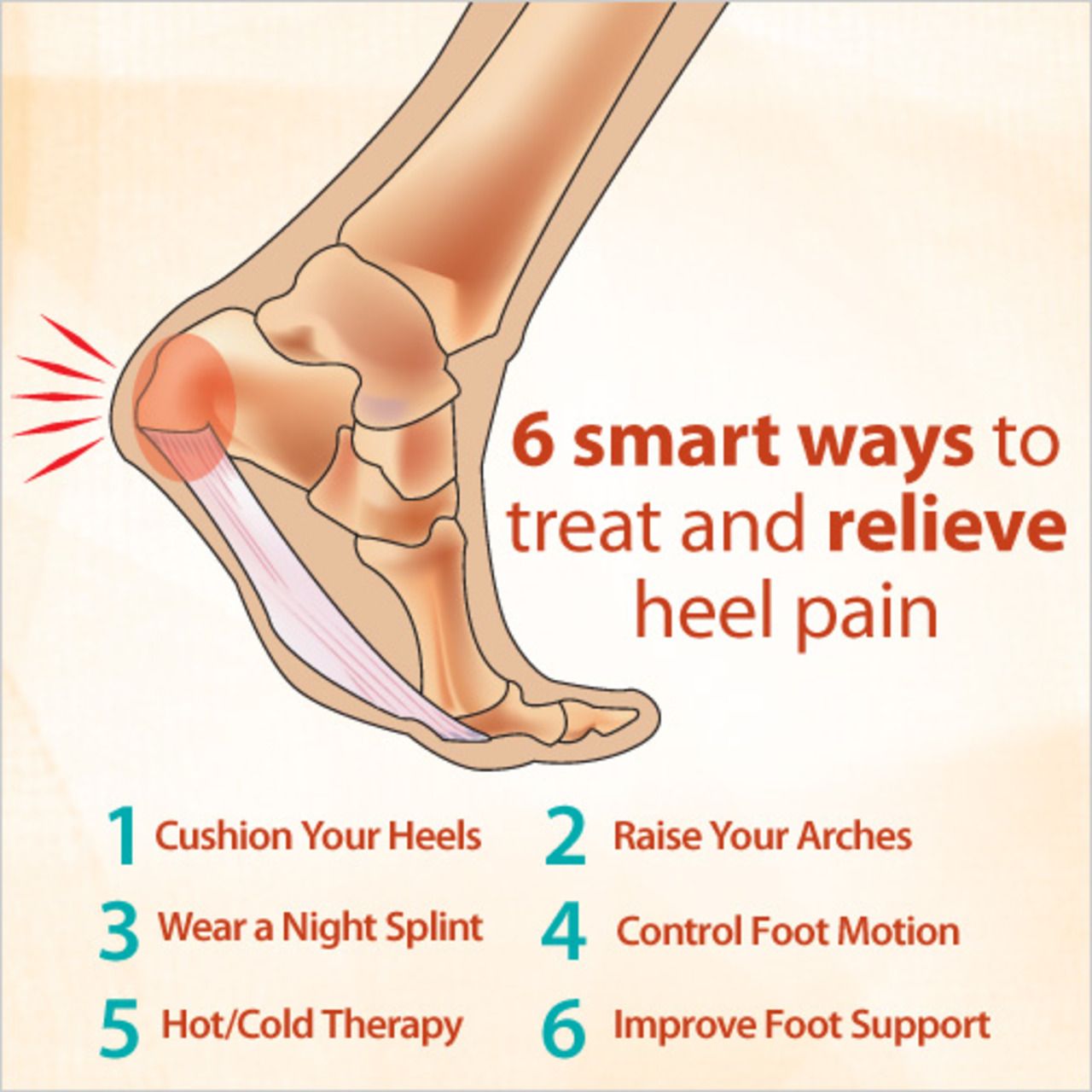 In certain instances, surgery may be recommended to correct the alignment of the offending bone. Cutting out the callous will only make the condition worse if the underling boney problem is not corrected.
In certain instances, surgery may be recommended to correct the alignment of the offending bone. Cutting out the callous will only make the condition worse if the underling boney problem is not corrected.
Plantar Warts
A plantar wart is a wart that occurs on the toes or the sole of the foot. Plantar warts are caused by the verruca vulgaris virus, a common viral infection of the skin. You can get warts anywhere on your body, but when they are on the bottom of your feet, they’re called plantar warts because the bottom of your foot is known as the plantar section. This condition is more common in children than in adults. A plantar wart occurs from direct contact with the verruca vulgaris. Moist, sweaty feet are at higher risk for picking up the virus, especially in public showers and around swimming pools. The virus is not highly contagious but can thrive long enough in these ideal conditions to attach to a vulnerable foot.
Over-the-counter methods of treating plantar warts are typically ineffective because it’s too difficult for them to penetrate the thick skin on the bottom of the foot.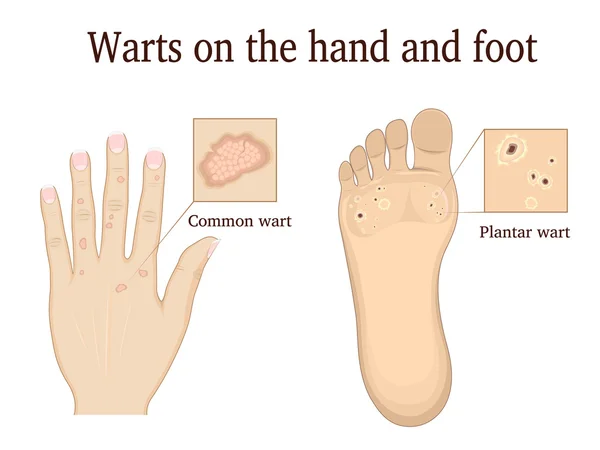 Depending on the severity of your plantar warts, your podiatrist may recommend burning the wart with a topical acid, freezing the wart with liquid nitrogen, removing the wart with a laser, or surgically removing the wart.
Depending on the severity of your plantar warts, your podiatrist may recommend burning the wart with a topical acid, freezing the wart with liquid nitrogen, removing the wart with a laser, or surgically removing the wart.
Psoriasis
Psoriasis is a common, chronic, and recurrent inflammatory disease of the skin. It is characterized by round, reddish, dry scaling patches covered by grayish-white or silvery-white scales. The lesions are commonly found on the nails, scalp, elbows, shins, and feet. On the feet, it can be difficult to distinguish it from athlete’s foot, and the nail appearance may be confused with fungal infections of the toenails. A characteristic feature of the condition is pinpoint bleeding when the scaled areas are brushed off.
A variant of psoriasis is called pustular psoriasis. This form of the disease is characterized by small pustules or blisters filled with clear or cloudy fluid. This can mimic acute athlete’s foot. It characteristically does not itch or burn. It is distinguished from athlete’s foot by negative fungal cultures. Psoriasis can also affect the joints of the feet and lower extremities causing a painful arthritis. X-rays will show characteristic erosions of the bones in the toes. Treatment consists of anti-inflammatory medications, steroids, and other medications specific for the treatment of psoriasis.
It is distinguished from athlete’s foot by negative fungal cultures. Psoriasis can also affect the joints of the feet and lower extremities causing a painful arthritis. X-rays will show characteristic erosions of the bones in the toes. Treatment consists of anti-inflammatory medications, steroids, and other medications specific for the treatment of psoriasis.
Skin Cancer & Other Lesions
Malignant Melanoma
Pigmented lesions should always be inspected and observed. Most pigmented areas are nothing but freckles and moles. However, a potentially deadly pigmented lesion that can occur on the foot and lower extremity is Malignant Melanoma. A physician should evaluate any pigmented lesion that suddenly occurs or a pigmented lesion that starts to change its appearance. These changes are usually subtle and may consist of increased size and depth of color, onset of bleeding, seepage of clear fluid, tumor formation, ulceration and formation of satellite pigmented lesions. The color is usually not uniform but is likely to be scattered irregularity, being brown, bluish black or black. An increase in pigmentation may precede enlargement of the lesion by several months. Although any part of the body may be affected, the most frequent site is the foot. Overall, the incidence of malignant melanoma is quite low.
The color is usually not uniform but is likely to be scattered irregularity, being brown, bluish black or black. An increase in pigmentation may precede enlargement of the lesion by several months. Although any part of the body may be affected, the most frequent site is the foot. Overall, the incidence of malignant melanoma is quite low.
Actinic Keratosis
Another cancer-causing lesion that can occur on the feet are called Actinic Keratosis. Although most commonly found in sun-exposed areas of the body such as the face, ears, and back of the hands, these lesions can also occur on the foot. They are characterized as either flat or elevated with a scaly surface. They can either be reddish or skin-colored. On the foot, they are frequently mistaken for planters warts. These lesions are the precursor of epidermoid carcinoma. Treatment for these lesions should be thorough as they are definitely precancerous. Treatment consists of freezing the lesions with liquid nitrogen or sharp excision.
Kaposi’s Sarcoma
Yet another cancerous lesion that can occur on the foot is called Kaposi’s Sarcoma. These lesions occur most commonly on the soles of the feet They are irregular in shape and have a purplish, reddish or bluish-black appearance. They tend to spread and form large plaques or become nodular. The nodular lesions have a firm rubbery appearance. The appearance of these lesions are usually associated with AIDS infection. It can occur without the concurrent AIDS infection but this is very rare.
Venous Stasis
Increased pigmentation occurs for a variety of other reasons. Dark patches of skin occur about the ankles and lower legs in persons who suffer from Venous Stasis. Venous stasis is caused by an accumulation of fluid in the lower extremities due to poor venous return of blood to the heart. As the fluid accumulates, veins break or leak fluid into the tissues. As blood cells break up in the tissue, they deposit the iron that is part of hemoglobin in the blood cell, which stains the skin causing a light to dark brownish appearance.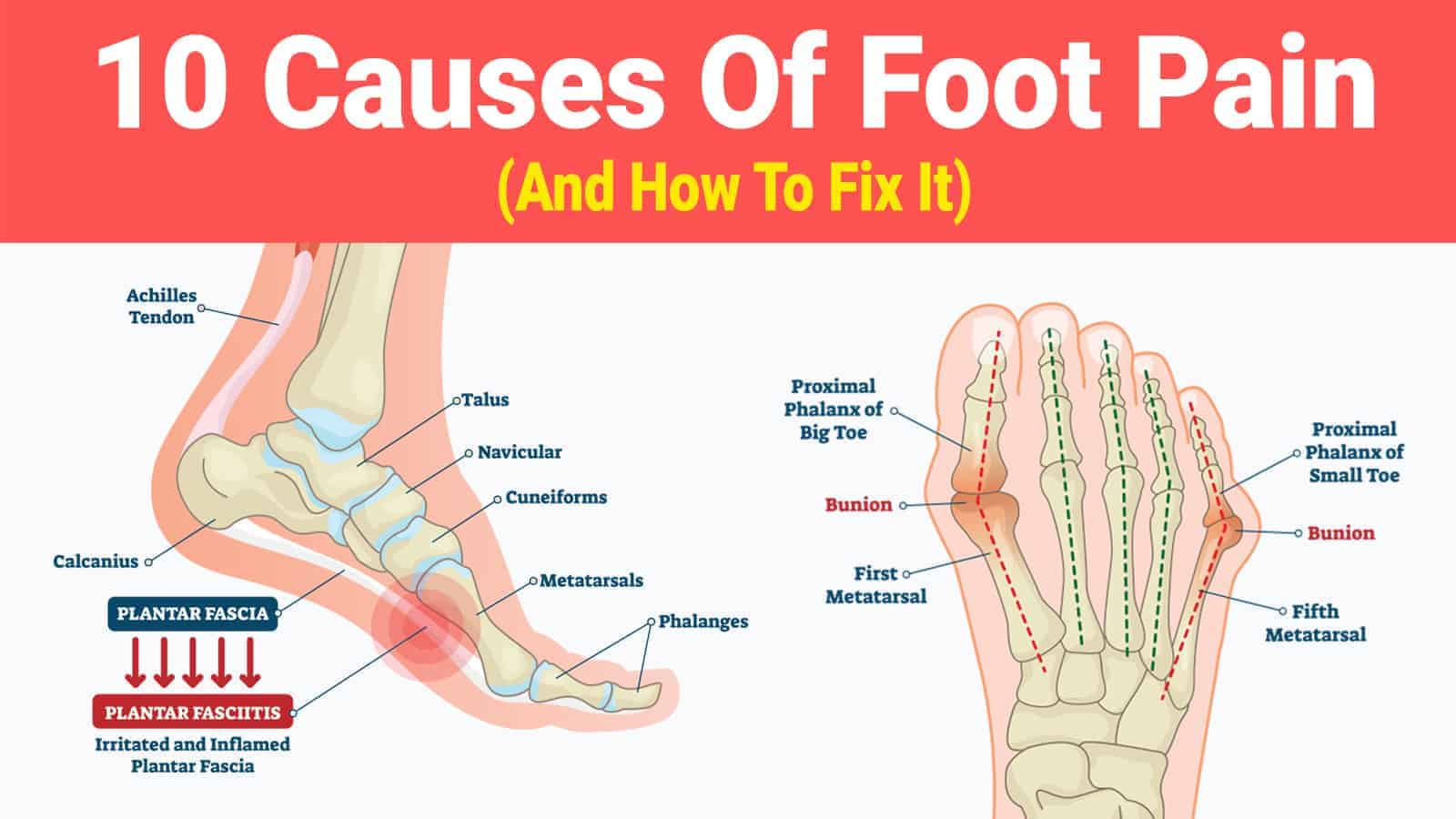 With time, the skin becomes thinned and weeping venous stasis ulcerations can occur. This condition requires professional attention by a physician.
With time, the skin becomes thinned and weeping venous stasis ulcerations can occur. This condition requires professional attention by a physician.
Diabetic Dermopathy
Another cause of generalized increased pigmentation is diabetes. The condition termed Diabetic Dermopathy occurs most frequently on the shins and lower legs. They may have the appearance of small scars. Their appearance may precede the diagnosis of diabetes by several years. The actual cause of diabetic dermopathy is not well understood, but it does not cause any particular problem or pose any particular health threat.
Spider Veins
Small, spider-like areas of increased pigmentation on the ankles are caused by the break down of small veins in the area and are called Spider Veins; they also pose no health risks.
Sweaty Feet/Hyperhydrosis
Hyperhidrosis, or excessive sweating, can be localized to one area or it may be generalized. In the localized type, the most common sites are the palms and soles of the feet. The cause of this excessive sweating is not well understood. There is an emotional component to it in some, but not all, cases. The excessive moisture contributes to athlete’s foot and plantar wart infections.
The cause of this excessive sweating is not well understood. There is an emotional component to it in some, but not all, cases. The excessive moisture contributes to athlete’s foot and plantar wart infections.
There are no good oral medications for the control of hyperhidrosis. Topical antiperspirants are of little value. A prescription topical medication called “Dry sol” works for some people. This medication works best if applied to the feet before going bed, then wrapping the feet in plastic wrap and wearing socks. This should be done three to four nights in a row. Although this is not a cure for the problem, it does provide temporary relief and is useful as part of the treatment plan for athlete’s foot
If you are suffering from a skin condition of the foot, or any foot ailment, contact us today at (913) 325-2958 or schedule an appointment online with one of our experienced podiatrists.
what is it, causes and treatment
What are warts?
Warts are a fairly common dermatological problem. These unaesthetic formations on the skin not only spoil the appearance, but also signal the presence of a virus in the body of their owner. Most often, warts affect children between 9 and 16 years of age and adults over 30 years of age.
These unaesthetic formations on the skin not only spoil the appearance, but also signal the presence of a virus in the body of their owner. Most often, warts affect children between 9 and 16 years of age and adults over 30 years of age.
Warts are benign growths on the skin that are caused and developed by various types of human papillomavirus (HPV). The activation of this virus in the human body occurs under the influence of factors such as:
- immunosuppression;
- hypothermia;
- inflammatory process in the body;
- promiscuity.
Warts are contagious, their pathogen is transmitted through contact with a sick person or through objects of common use. The risk of infection increases when the integrity of the skin is violated (atopic dermatitis, cuts).
Body growths in the form of warts can have a different structure and appear on any part of the skin.
There are the following types of warts :
- simple (common, vulgar) are light (gray, yellow) or brown nodules, the diameter of which is 2-10 mm. Most often appear on the elbows, knees, fingers and face;
- flat (juvenile) are pink, red or yellow-brown formations that have a smooth and flat surface. Most often they are formed in the oral mucosa, the back of the hands and around the lips;
- palmar-plantar – these are dense growths of a rounded shape that have a granular surface. These neoplasms appear on the lobes and skin of the feet;
- filiform (hanging warts) are small soft threads of thin skin. The diameter of the warts, as a rule, is 4-6 mm. Most often, filiform warts occur under the mammary glands, on the skin of the eyelids and neck, in the armpits;
- genital (pointed, venereal) – this type of warts will appear in the form of papules on the labia, in the penis, perianal and pararectal zones.
 Such neoplasms can cause cancer;
Such neoplasms can cause cancer; - senile warts – such growths occur in people of middle and old age. Over time, these keratomas increase in size, and from light neoplasms turn into brown warts.
What are plantar warts and what do they look like
Plantar wart is a type of wart that occurs and is located on the sole of the foot. Usually, these are benign neoplasms in the upper layer of the skin. They arise as a result of infection with a virus, that is, they are of an infectious nature. Often, these warts are confused with calluses because they have a very similar appearance and feel like a callus on palpation. Some warts develop small black dots that some people mistake for the “roots” of the wart. In fact, they do not affect the spread of these skin lesions. Black dots are small blood vessels that have grown into the body of the wart.
Plantar warts can be small or grow and cover most of the sole of the foot.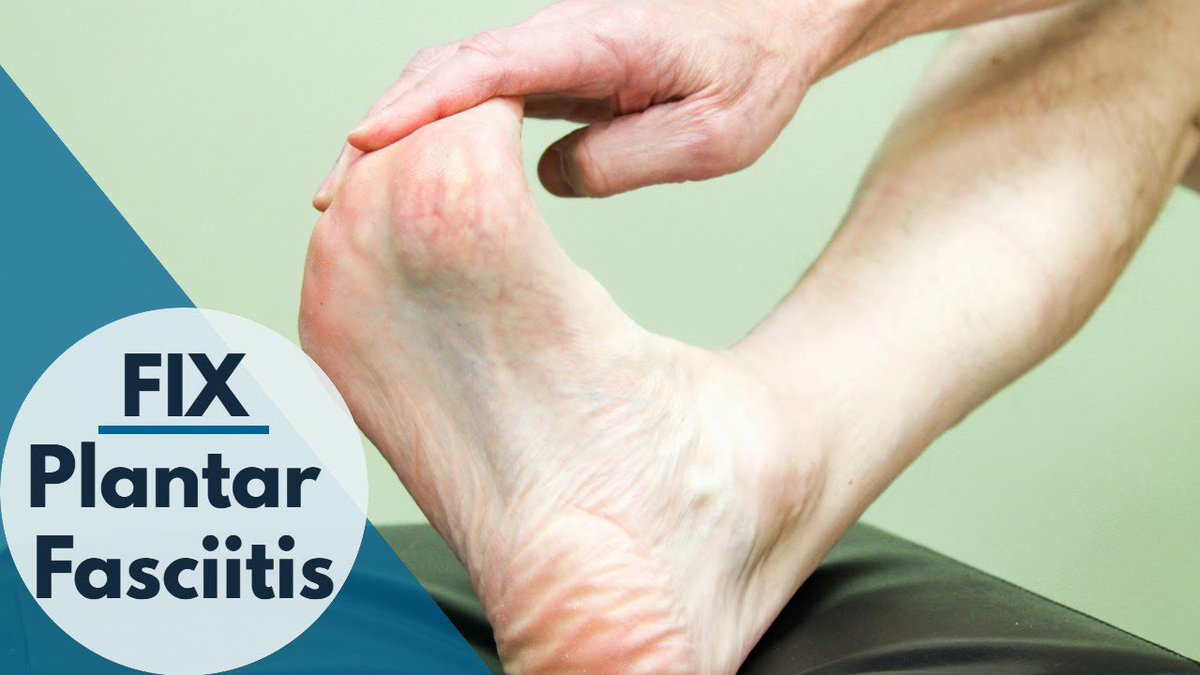 As a rule, they are painless and go away on their own, however, in complex and neglected situations, it takes from several months to 2 years to eliminate them.
As a rule, they are painless and go away on their own, however, in complex and neglected situations, it takes from several months to 2 years to eliminate them.
Causes of sole warts
Warts are usually transmitted from person to person by contact. The virus is not very pathogenic or capable of infecting another person, but sometimes infection occurs through a small defect in the skin.
Also, warts can spread to other areas of the human body. The virus is rarely transmitted by touching an object that has been used by a previously infected person. They also appear due to:
– frequent skin trauma;
– visits to saunas, swimming pools and gyms;
– wearing tight and uncomfortable shoes;
– using someone else’s socks or tights;
– profuse sweating on the feet;
– dermatological pathologies: atopic dermatitis, eczema, etc.
Plantar warts may occur singly or in groups. They appear as thick, rough, calloused bumps on the soles of the feet. In addition, plantar warts often have many small black dots on the surface, which are actually tiny blood vessels. Plantar warts are usually painful with pressure or mechanical impact.
In addition, plantar warts often have many small black dots on the surface, which are actually tiny blood vessels. Plantar warts are usually painful with pressure or mechanical impact.
The stages of development of plantar warts are based on the division of warts into species, according to size :
- small plantar warts – one or more small painless sites of warts
- moderate or medium plantar warts – multiple lesions that may cause discomfort
- giant plantar warts – warts cover most of the sole of the foot and can cause significant discomfort and pain.
Why are warts on the foot dangerous?
Up to 90% of neoplasms on the soles do not affect the health and life of a person. Just a few growths appeared, and after a few months they disappeared. And no problems with discomfort. However, unfortunately, not everyone is so lucky. 10% of the remaining growths can make life extremely unpleasant and even painful – sometimes they cause severe pain when walking and limit mobility, while changing the posture and walking of a person. In such cases, you can not do without the help of a doctor.
In such cases, you can not do without the help of a doctor.
And also, you should know that it is extremely rare, but possible, under an unpretentious neoplasm similar to a plantar wart, sometimes squamous cell carcinoma and melanoma are masked . The sooner this is detected, the more successful the treatment will be.
How to get rid of a wart on the foot?
The first step is an examination by a dermatologist. Diagnosis of the disease is usually simple, but treatment is complex and lengthy.
Treatment is prescribed if education:
- constantly growing
- causes other neoplasms
- hurts a lot
- interferes with normal walking
After the doctor has examined, determined the type of wart and its goodness, he can offer you the following options for eliminating this problem:
- Wart cryotherapy nitrogen (-190C).
 The applicator is pointed at the wart and “cauterized” for 10-30 seconds, if it is a palmar-plantar wart – 30-60 seconds. The wart turns pale after exposure to nitrogen, then edema appears, and after a few hours – an epidermal blister with hemorrhagic or serous contents. After a few days, the blister cracks and a subtle pink spot remains in its place. Sometimes it takes more than 1 treatment to completely remove the warts.
The applicator is pointed at the wart and “cauterized” for 10-30 seconds, if it is a palmar-plantar wart – 30-60 seconds. The wart turns pale after exposure to nitrogen, then edema appears, and after a few hours – an epidermal blister with hemorrhagic or serous contents. After a few days, the blister cracks and a subtle pink spot remains in its place. Sometimes it takes more than 1 treatment to completely remove the warts. - Laser removal warts device is one of the newest methods of wart removal, the effect of which is based on coagulation. After local anesthesia, the laser tip is directed to the wart and within a few minutes – this neoplasm evaporates. At the end of the procedure, a bandage with an antiseptic solution is applied to the areas that have undergone coagulation.
- Surgical procedures for the removal of plantar warts with a special curette or electric knife.
- Chemotherapeutic drugs .

- Preparations containing salicylic acid are sold as a patch (corn patch), gel, or ointment for plantar warts.
- Solutions or drops containing celandine.
How to avoid getting or spreading new warts
0007
- be sure to wash your hands after touching a wart you already have
- wear natural socks and leather shoes, avoid sweaty feet – warts love wet environments
- Wear shower shoes every time you use the pool, locker rooms, or take a shower that other people can use
- Wash feet with disinfectant every time after being in areas where the virus is likely to spread
- before starting the pedicure procedure (and manicure as well), make sure that your master sterilizes the tools
- never try to pop a wart or shave it off
- Do not share towels, washcloths, clothing, nail clippers, razors, or other personal items.

Who else if not you are the owners of your destiny, safety, health and life. Treat yourself with special attention and care and it will come back to you a hundredfold! Take care of yourself, you are alone.
What are plantar warts? Why do they arise? How to remove them?
There are several varieties of warts, one of them is plantar. As their name implies, they appear on the soles of the feet. They look like hard granular growths. They most often appear on the heel and other areas of the sole that experience the most pressure while walking.
Our expert in this field:
Sarychev Denis Vladimirovich
Dermatovenereologist
Call a doctor
Reviews of Dr.
Why do plantar warts occur?
Plantar wart is a skin infection caused by the human papillomavirus. There are over a hundred different types of this pathogen. Some of them are harmless, others cause warts (in the language of dermatologists – papillomas) on the skin, on the mucous membranes of the oral cavity, and genital organs.
Many people experience papillomaviruses, but not everyone has warts on the soles. Viruses love people with reduced immune defenses and most easily penetrate the skin under certain conditions: if there are scratches and other damage on it, when it is warm and humid. Often, plantar warts “pick up” in pools, public baths, especially if you walk barefoot, without slippers.
At high risk are children and adolescents, people who have had papillomavirus infection in the past.
In general, the pathogen is not very contagious and is not easily transmitted from person to person.
Should plantar warts be removed? Can they be dangerous?
Most often, plantar warts do not hurt and do not interfere in any way, they disappear on their own after 1-2 years. It is not necessary to remove them, but if you do not want to wait until they pass by themselves, you can treat them with salicylic acid. In some cases, a visit to the doctor becomes mandatory:
- If the plantar warts are large, painful, and interfere with walking.

- You tried to treat a wart with home remedies, but it did not go away or recurred soon after.
- Neoplasm began to look suspicious, its appearance and color changed.
- You are diabetic, you have impaired blood circulation in the vessels of your legs. In this case, the wart should be treated only under the supervision of a doctor.
- Your immune system is severely weakened.
- Some kind of incomprehensible formation appeared on the skin of the foot, and you are not sure that this is a wart at all. The doctor may order a biopsy.
What complications can cause plantar warts? If they are very painful, they change the way you walk – you may not even notice it. As a result, the load on the feet, muscles and joints of the legs will be distributed incorrectly. This threatens with some problems with the musculoskeletal system.
We will call you back
Message sent!
wait for a call, we will contact you shortly
How can a plantar wart be removed?
Plantar warts are usually treated with cryotherapy.

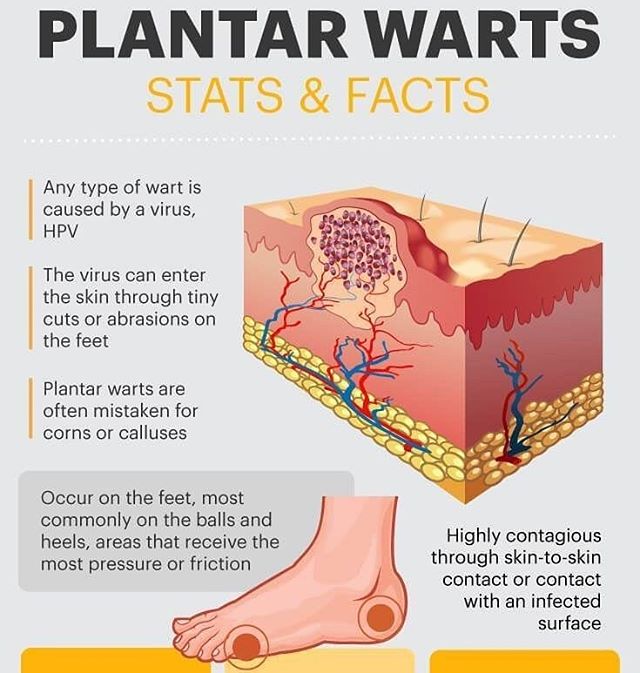
 Such neoplasms can cause cancer;
Such neoplasms can cause cancer;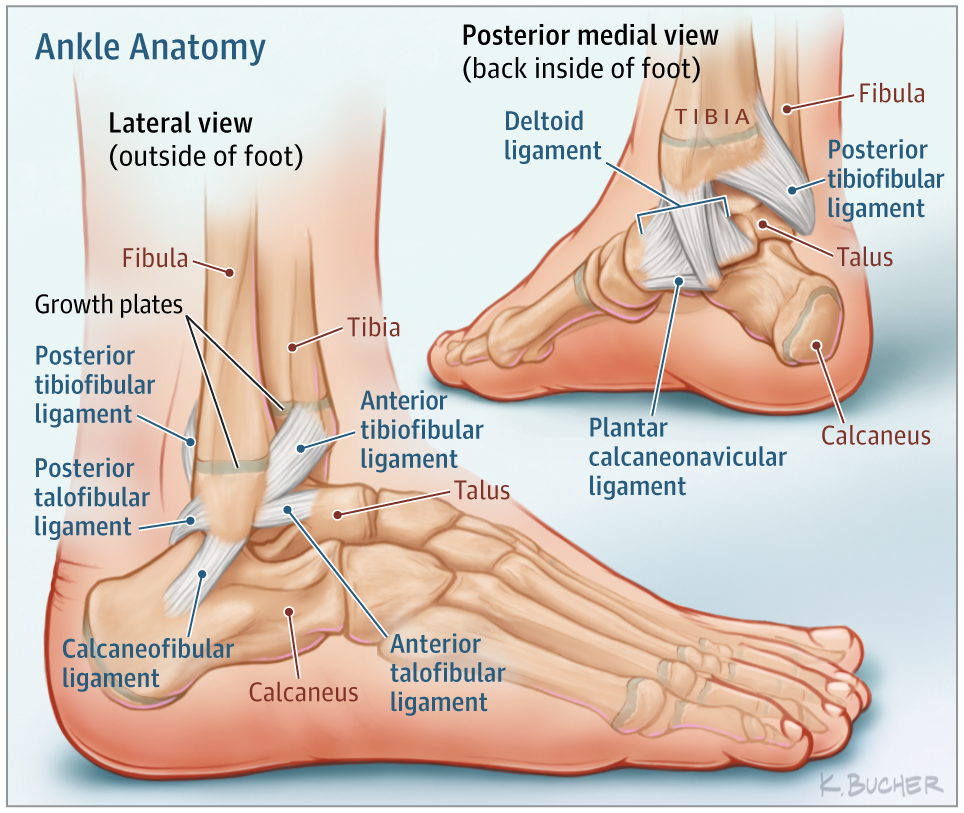 The applicator is pointed at the wart and “cauterized” for 10-30 seconds, if it is a palmar-plantar wart – 30-60 seconds. The wart turns pale after exposure to nitrogen, then edema appears, and after a few hours – an epidermal blister with hemorrhagic or serous contents. After a few days, the blister cracks and a subtle pink spot remains in its place. Sometimes it takes more than 1 treatment to completely remove the warts.
The applicator is pointed at the wart and “cauterized” for 10-30 seconds, if it is a palmar-plantar wart – 30-60 seconds. The wart turns pale after exposure to nitrogen, then edema appears, and after a few hours – an epidermal blister with hemorrhagic or serous contents. After a few days, the blister cracks and a subtle pink spot remains in its place. Sometimes it takes more than 1 treatment to completely remove the warts.

